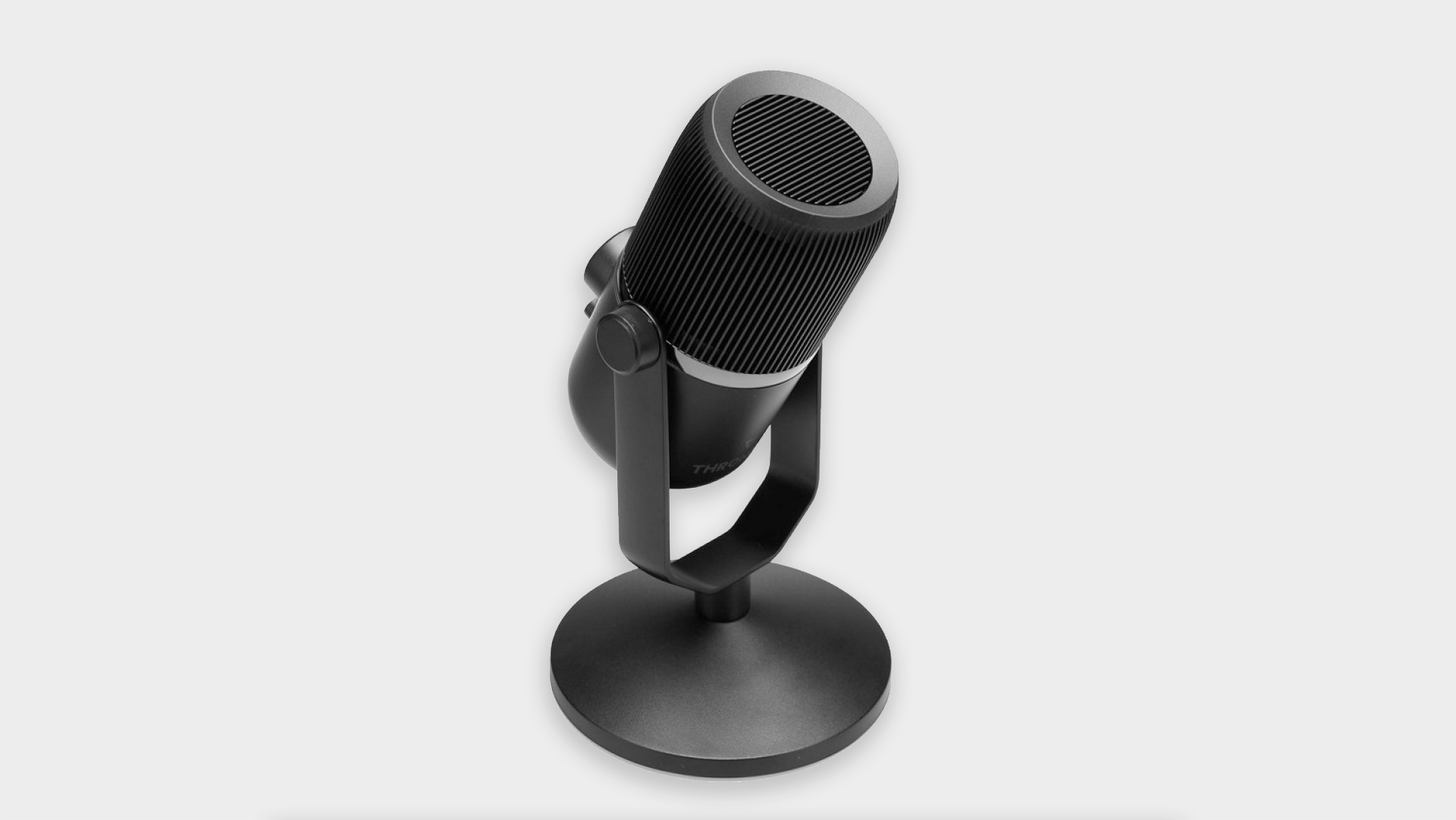Our Verdict
While the condenser mic in the Thronmax MDrill Zero Plus is fairly decent, the omni-directional mic isn't, making it a hard sell.
For
- Condenser mic has nice tones and limits plosives and sibilance
- Completely plug and play with no software required
Against
- Omni-directional mic is woeful
- The premise of the product doesn’t make sense without it
PC Gamer's got your back
Desktop USB microphones are becoming a staple for many setups, a necessary requirement to increase audio quality. Headset mics are usually on the rough side of ok, but stepping up to professional audio mixing is costly and confusing. Thus USB microphones are a great middle ground for anyone looking cut out noise and increase clarity with menial fuss.
But USB microphones are still a bit tricky to navigate. The range of options is vast, and it can get very expensive very quickly. For those looking to dip their toes, a good moderately priced option can be tricky to pin down. That's why we're keen to see how the new Thronmax MDrill Zero Plus handles the task.
Sitting at $70 (£50, $149.99 AUD) the Thronmax MDrill Zero Plus 96kHz is on the cusp of affordability for USB mics. But it boasts additional functionality: This microphone is actually two in one.
Most USB mics are condenser microphones. These work well when they’re nice and close to the person talking, and do a good job of limiting other noise. Sometimes people are also looking for omni-directional mics. Something you could put down in the middle of a conference and hopefully hear everyone in range.
Sample rate: 96kHz
Bitrate: 24-bit
Microphones: 16mm and 10mm condenser
Recording patterns: Cardioid, Omni-directional
Frequency response: 20Hz–20kHz
Having both options built into the one mic is a great idea. Doing both of these tasks well would make this mic a really smart purchase for someone looking for both functionalities at the flick of a switch. Sadly, that’s where the Thronmax MDrill Zero Plus 96kHz lets us down.
The main condenser mic is fine, really. The quality has a surprisingly nice depth of tone and decent volume. It’s also pretty good at limiting your plosives and sibilant sounds for the price.
As a condenser mic it works best the closer you can get it to your face. Unfortunately, the current trend in mics sees them on very short stands and this one is no different. While the stand is very sturdy, and doesn’t take up much space, it’s also not close to your face. Thankfully the box it comes in does a fairly good job of raising it to optimal height.
Once in place, it does well at minimising background sounds, like computer fans, but will absolutely pick up keyboard taps and even just other people talking in the room. I often use Nvidia’s RTX Voice software to help mitigate this kind of thing during streaming, but for some reason it was nowhere near as effective for this mic as it has been on others.


Best microphone for gaming: make sure you're heard
Best webcams: be seen while you get your stream on
Best capture cards: lessen the load with a dedicated card
It’s a very usable mic in this form, and does a decent job, but there are cheaper options on the market with comparable quality.
Sadly, the omnidirectional mic is just not good. I often found that at a distance, the condenser mic did a better job of picking up people than it did from every angle. It’s bafflingly useless and diminishes the whole premise of the two-in-one form factor of the product.
Swapping back and forth between the two modes is just the turn of a dial on the mic. It’d be superbly easy if I ever planned on using the omnidirectional mic ever again. The same dial also controls the mute function, needing it to sit between the two modes to be active. It does snap slightly into place, and a ring lights up to let you know you’ve muted, but for something this important, a more exact control would be nice. There’s nothing worse than thinking you’re on mute when you’re not, and that feels like a possibility here.
But I have to give it to them, there’s something to all this simplicity. The mic worked no problems immediately from being plugged in, on multiple computers. The Thronmax MDrill Zero Plus 96kHz doesn’t require any special software or drivers, and that was actually very refreshing. It’s also USB Type-C, which is always welcome. As far as plug and play goes, it’s a very clean experience.
For anyone after a decent condenser mic for the price, the Thronmax MDrill Zero Plus 96kHz will do the job, and deliver fairly good quality audio. But it’s hard to recommend a product that boasts two functions and only really delivers on one. Even in Thronmix’s own range there’s several pure Cardioid Condenser Microphones both cheaper and slightly more expensive which would have to be better choices. Let alone shopping into other brands of microphones.
While the condenser mic in the Thronmax MDrill Zero Plus is fairly decent, the omni-directional mic isn't, making it a hard sell.

Hope’s been writing about games for about a decade, starting out way back when on the Australian Nintendo fan site Vooks.net. Since then, she’s talked far too much about games and tech for publications such as Techlife, Byteside, IGN, and GameSpot. Of course there’s also here at PC Gamer, where she gets to indulge her inner hardware nerd with news and reviews. You can usually find Hope fawning over some art, tech, or likely a wonderful combination of them both and where relevant she’ll share them with you here. When she’s not writing about the amazing creations of others, she’s working on what she hopes will one day be her own. You can find her fictional chill out ambient far future sci-fi radio show/album/listening experience podcast right here. No, she’s not kidding.


